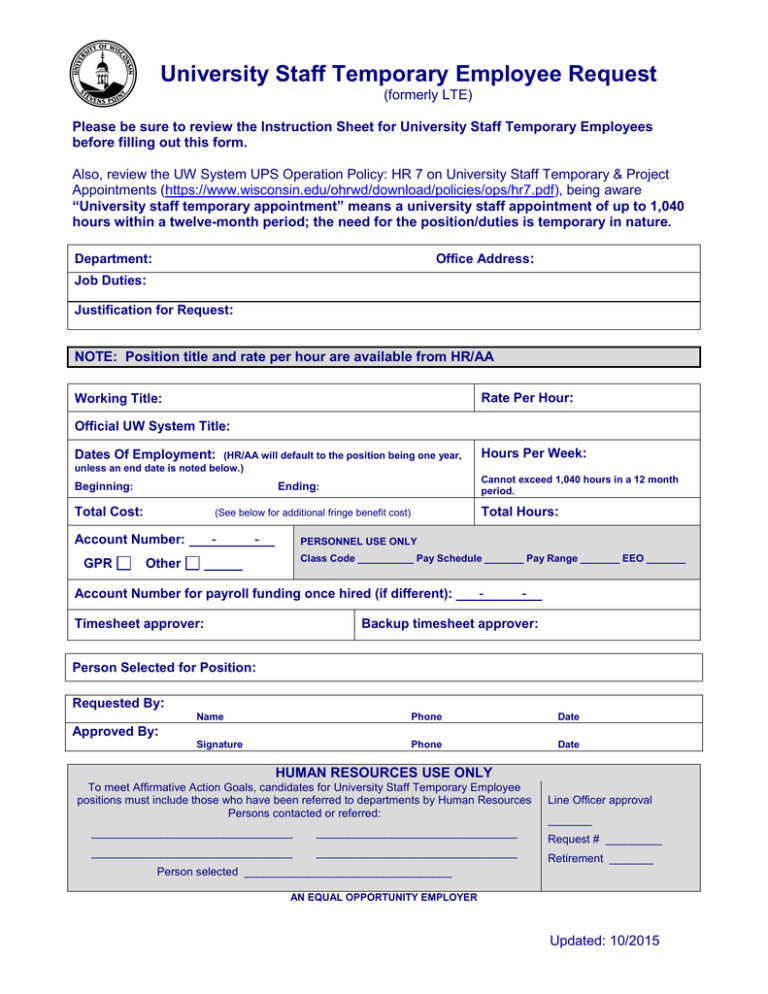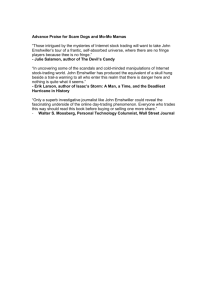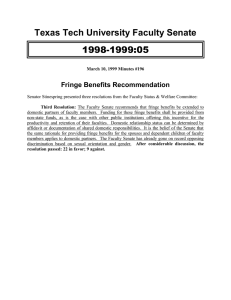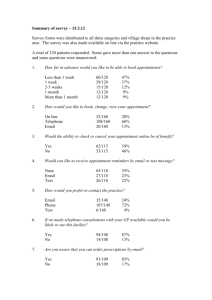University Staff Temporary Employee Request
advertisement

University Staff Temporary Employee Request (formerly LTE) Please be sure to review the Instruction Sheet for University Staff Temporary Employees before filling out this form. Also, review the UW System UPS Operation Policy: HR 7 on University Staff Temporary & Project Appointments (https://www.wisconsin.edu/ohrwd/download/policies/ops/hr7.pdf), being aware “University staff temporary appointment” means a university staff appointment of up to 1,040 hours within a twelve-month period; the need for the position/duties is temporary in nature. Department: Office Address: Job Duties: Justification for Request: NOTE: Position title and rate per hour are available from HR/AA Rate Per Hour: Working Title: Official UW System Title: Dates Of Employment: (HR/AA will default to the position being one year, unless an end date is noted below.) Beginning: Cannot exceed 1,040 hours in a 12 month period. Ending: Total Cost: (See below for additional fringe benefit cost) Account Number: - GPR - Hours Per Week: Total Hours: PERSONNEL USE ONLY Class Code __________ Pay Schedule _______ Pay Range _______ EEO _______ Other Account Number for payroll funding once hired (if different): Timesheet approver: - - Backup timesheet approver: Person Selected for Position: Requested By: Name Phone Date Signature Phone Date Approved By: HUMAN RESOURCES USE ONLY To meet Affirmative Action Goals, candidates for University Staff Temporary Employee positions must include those who have been referred to departments by Human Resources Persons contacted or referred: ________________________________ ________________________________ ________________________________ ________________________________ Line Officer approval _______ Request # _________ Retirement _______ Person selected _________________________________ AN EQUAL OPPORTUNITY EMPLOYER Updated: 10/2015 IMPORTANT FRINGE BENEFIT COST INFORMATION FOR UNIVERSITY STAFF TEMPORARY EMPLOYEES (formerly LTEs) Wisconsin Act 13, which contains the eligibility rules for participation in the Wisconsin Retirement System (WRS) for part-time faculty and University Staff Temporary Employee (formerly LTE) states an employee will be covered under WRS immediately if he/she has a one-third time appointment for at least one year. If the employee’s appointment does not meet these initial criteria, his/her appointment will be monitored for one year. If during the monitoring period, the employee works at least 440 hours for an academic appointment or 600 hours for a University Staff Temporary Employee appointment, the employee will be covered by WRS beginning with the first pay period after completing one year of employment. The monitoring period will cover all the hours worked by the employee at the University. For example, if the employee has a concurrent appointment in another department, the total hours worked between the two departments will be used to determine the employee's eligibility for benefits. Or, if the employee worked in one department before working in another, the hours worked in the first department will be added to the hours worked in the second department to determine his/her eligibility for benefits. Because of this, more part-time employees are eligible to participate in the retirement system and the insurance benefit program. As a result, budget managers must be aware of the impact of increased fringe benefit cost. The fringe benefit budget rate will change as follows when a part-time employee becomes eligible for benefits: Not Eligible for Benefits University Staff Temporary Employee 8.90 % Eligible for Benefits 35.20 % PLEASE NOTE: If the funding source for the part-time employee’s position is a 133 or a 144 appropriation (state or federal grant), the fringe benefit rate listed in the second column should be used regardless of whether the employee is eligible for fringe benefits. The grant account will incur the fringe benefit charges at this rate. If the funding source for the part-time employee’s position is a 128 or 136 appropriation (program revenue), the fringe benefit rate listed in the second column should be used for budget purposes; however, the fringe benefit charges incurred by the account will be the actual employer cost of the benefits actually taken by the employee. The actual fringe benefit cost could be more or less than the 64% average; in some cases, these charges could total 90% or more of the budgeted salary. Updated: 10/2015



